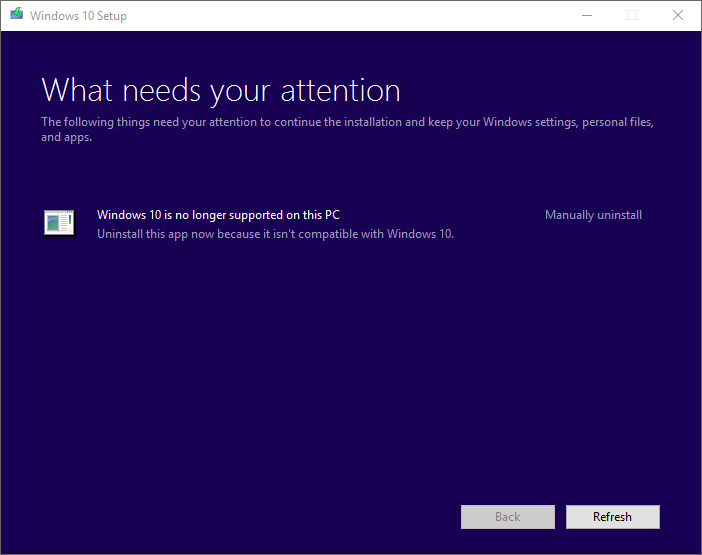Microsoft’s stance on unsupported hardware adds uncertainty to Windows 10
Things were quite easy to understand from a support perspective in the pre-Windows 10 age. If you installed Windows on a PC or bought a PC with Windows pre-installed, you could be certain that you could run it until Microsoft ended support for the operating system.
Upgrades to newer versions of Windows were possible as well, and if an upgrade was supported, you could be certain that you could run the new operating system version on the device for the remainder of its support phase.
Microsoft cut off very old hardware at times, but most of the time, you could install a new version of Windows on a PC with relatively old hardware. You may not have had the best experience using the operating system, but you could run it.
This changed with the release of Windows 10. Windows as a Service is a fundamental change; while all versions are called Windows 10 that Microsoft releases twice a year, each may change what is supported and what is not.
This means that owners of Windows PCs may be stuck on a particular release version of Windows 10. This would not have been an issue on earlier versions of the operating system, as it would still be usable until Microsoft ended support for it. With Windows 10, it means that support will run out after less than 2 years.

Support end means that users are stuck eventually on an unsupported version of Windows that won't get security updates anymore. It also means that users cannot upgrade the system to a newer version of Windows.
What's left then is to either restore an older version of Windows if still possible, or switch to a Linux distribution.
Microsoft is aware of the dangers, and reacted quickly when some Windows customers started to report that they could not upgrade their devices to the Windows 10 Creators Update. Windows Update displayed "Windows 10 is no longer supported on this PC" during setup, and refused to continue the installation of the upgrade.
Devices that are equipped with Intel's Clover Trail silicone are blocked from being upgraded from the Anniversary Update version of Windows 10 to the Creators Update version (and any future version).
Microsoft solution for this was to extend support for the Anniversary Update of Windows 10 until 2023. Support means that affected devices will receive security updates but no new feature updates.
Intel dropped support for the silicon which it introduced when first devices with Windows 8 were released. These devices ran Windows 8 initially and many were upgraded later to Windows 10 by customers taking advantage of the free upgrade offer.
Both companies are to blame partially for the fiasco; Intel because it dropped support for processors after a relatively short period of time of availability, and Microsoft because it designed Windows 10 this way.
It is interesting to note that Microsoft's main reason for blocking the update on these devices is that performance would potentially be impacted on these devices.
Consumers are on the receiving end when it comes to this as uncertainty is added to the purchase of Windows devices or hardware components.
Will Windows 10 support the hardware components until 2020 or 2025? How will Microsoft react then? Will it provide security updates for the latest supported version of Windows 10 on these devices as well? Which hardware may cause incompatibilities with new versions of Windows? Processors? Graphic cards, hard drives, motherboards?
PC World author Mark Hachman suggests that any component that is not supported any longer by its manufacturer may block future Windows 10 upgrades.
Microsoft confirmed late Wednesday that any hardware device that falls out of the manufacturer’s support cycle may be ineligible for future Windows 10 updates.
What’s worrying about Microsoft’s statement, though, is its broadness. Conceivably, any “device”—microprocessor, hard drive, network controller, sound card, headphones, monitor, and more—that a manufacturer discontinues or fails to actively support could drop out of Windows updates.
While it is fair to say that most desktop computers won't run into compatibility issues with future versions of Windows 10 if they run Windows 10 already, there is a chance that some hardware will become incompatible eventually. We are talking about an eight year period as Microsoft guaranteed support until 2025 at the very least, and a lot can happen in eight years.
Now You: What's your take on this?
This article was first seen on ComTek's "TekBits" Technology News

- Log in to post comments